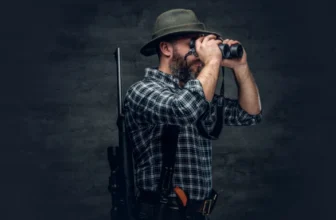Searching for deer sheds is a skill every hunter needs to master, especially if they want to hunt effectively. Remember to bring some navigational aids along to avoid getting lost. Here are some of the best tactics I learned throughout my experience of how to find deer sheds.
1. Look out for the food source
If you are able to find a food source, there is a high possibility that it’s a deer shed. Keep in mind that if you are looking out for such signals during winter, the food source may not be as substantial as other seasons. This is because winter bucks would consume most of their food sources to keep themselves alive.
Also, keep an eye out for crops such as maize, corn and even soybeans. These are great places to begin scouring as you will come across deer sheds.
Furthermore, if you stumble upon a feeding ground that is highly frequented by deer, you will potentially be able to find a deer shed.
2. Time your search carefully
It is important to note that there are different types of deer shed during different seasons. Let me share some useful information to help you out.
The whitetails up north shed their antlers in the month of January. Midwest bucks keep their antlers on until February. The southern bucks are shed their antlers sometime between early February to late March.
Hence, if your timing is accurate, you would be able to easily identify deer sheds.

Continue reading for 7 Best tactics in finding deer sheds
3. Seek help from an expert
Please seek help from an expert especially if you are a beginner. It would be wise to observe how the experts do it because they would be more knowledgeable about the places where deer would frequently go. Also, they can hand out a few tips on how you can scout for deer sheds even when it’s snowing for example.
Please consult more than one expert because each of them will have their very own unique way of finding deer sheds. The more ideas you have, the better off you will be.
4. Keep your eyes on the ground
Deer sheds usually appear on the ground. However, most people easily get distracted by the sights and sound of their surroundings. This is just a reminder to most hunters to remember where to look.
It is important that you pay attention and keep a keen eye out for sheds because usually they are buried in leaves or dirt. Most sheds usually have certain parts that stick out. But to an untrained eye, he may miss it.

5. Be wary of competition
Let’s be real, you will not be the only one looking out for these deer sheds. As a matter of fact, you’re going to be competing for it, be it other hunters, mice, porcupines, and squirrels. Some animals eat sheds to obtain calcium.
For example, squirrels are capable of devouring an entire shed in no more than a week. Hence, you may only be able to get your hands on a shed as soon as they drop. If you are late, parts of it may have been eaten by an animal.
6. Having the right kind of equipment
Having a handheld GPS receiver, rangefinders or binoculars would not only ensure that you are on your intended course, it also increases your effectiveness in scouting.
For example, having a good pair of hunting binoculars would help you to scout certain areas, allowing you to easily spot deer sheds. Alternatively, you can purchase a trail camera and run them year-round to constantly monitor deer patterns. This will give you an idea of how the deer behave and when the majority of the bucks shed their antlers. By understanding this, you will be able to plan your hunt effectively.
7. Get a shed-hunting dog
Dogs are known to have a sense of smell which is much keener than humans. If they are properly trained, they will be able to locate and retrieve deer sheds for you.
This will save you a bunch of time and effort if you do it right. Not only that, you will have a companion with you on your hunting trips. Also, dogs are capable of detecting danger in the wilderness.
To execute this idea, you have to get a shed-hunting dog and train it.

Conclusion
These are 7 tactics to hunt for deer sheds. Shed hunting is no easy task and if you really want a stack load of sheds, you will need to be willing to be put in the time and effort. Perseverance and patience are key and like they say, if at first, you don’t succeed, try again. Stay safe and happy hunting! If you have any ideas you want to share, please comment below.
Author Bio: I am John Lewis, a blogger, survivalist and outdoor enthusiast.








